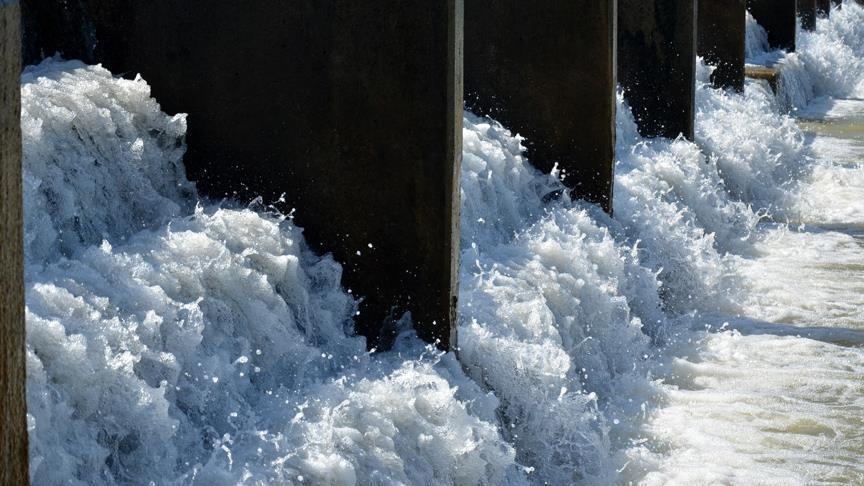Hope sparks in Iran to settle water dispute with Afghanistan
Iran and Afghanistan are locked in a water dispute for many years over Helmand River

TEHRAN, Iran
As the new Taliban administration, unlike the first tenure, is holding olive branches to neighbors, a glimmer of hope has ignited in Iran to settle a longstanding water dispute with Afghanistan.
Over the past many years Iran has been accusing Afghanistan of holding the water from Helmand River, known as the Hirmand River in Iran, by constructing series of dams.
Speaking to Iranian Labor News Agency -- a state-run media agency -- Iran's former envoy to Afghanistan Abolfazl Zohrevand said the dams have adversely affected Iran’s wetlands and worsened environmental issues in the border provinces, thus affecting livelihoods.
“Before the construction of dams on Helmand River, particularly the Kamal Khan dam, nine billion cubic meters of water poured into Hamoun wetlands, which has now plummeted to less than 800 million cubic meters per annum,” he said.
Hamoun is the largest freshwater lake in Iran linked to the local environment and livelihoods.
During its first stint in power in the late 1990s, the Taliban government had shut channels to the Kajaki dam on Helmand River, which caused the worst drought in Iran’s border region.
After the group was overthrown in 2001 by the US-led coalition, Iran pleaded with the UN to release the water.
Iranian officials have been blaming the past successive Afghan governments for constructing dams under the US influence to deny waters to Iran.
But Afghan officials have denied these claims, saying the dams were necessary for the generation of electricity and improving the irrigation system in the country.
Speaking to Anadolu Agency, Morad Kaviani Rad, a senior analyst with an interest in political geography, said the capacity of dams built over Helmand River is more than what is required for farmlands in Afghanistan. He said they were constructed to extract concessions from Iran.
He asked both sides to cooperate and find a solution to water woes as both need each other.
“Iran’s economy needs Afghanistan in terms of hydro-politics and Afghanistan’s economy needs Iran in terms of geopolitics. Ignoring these geographical aspects would impose great costs on both countries,” he said.
Possibility of cooperation
Another political commentator Pir Mohammad Molazehi said the Taliban cannot afford to take a different and more accommodating stand on the prolonged water conflict with Iran, as it has the potential to lead a discontent in the landlocked country.
But he also agreed that there was a scope for cooperation to reach a win-win deal.
“Tehran can give Taliban attractive offers such as energy export, access to the Chabahar port, and developmental assistance, and in return demand more water flowing to Iran”, he told Anadolu Agency.
Last month, some foreign media had reported that the Taliban has allowed the Helmand River to flow into Iran’s parched provinces after Tehran resumed fuel exports to Afghanistan after weeks and months of political uncertainty.
But Taliban officials in the southwestern Nimrouz province, bordering Iran, dismissed the reports of releasing waters.
The two sides have maintained close contact in recent weeks, even though Tehran has so far stopped short of recognizing the new Taliban government, in line with the international community’s stand.
History of dispute
The two neighboring countries have been locked in a longstanding water dispute, which has largely prevented them from realizing the vast potential of bilateral trade ties.
At the heart of the dispute is the Helmand River, which originates in the Hindu Kush Mountains near Kabul and flows 700 miles (1,126 kilometers) south before draining into Hamoun wetlands, located in Iran’s Sistan and Baluchestan province.
Many hydroelectric projects have been constructed on the river, most importantly Kamal Khan dam in Nimrouz province, and Kajaki dam 100 miles (160 km) northwest of Kandahar province.
Kamal Khan Dam and the second phase of the Kajaki dam were also completed recently, compounding Iran’s water woes.
During the inauguration ceremony of Kamal Khan dam, former Afghan President Ashraf Ghani declared that Afghanistan would no longer give “free water” to anyone, referring to Iran, but would exchange it for oil.
Tehran described it as a violation of the 1973 Helmand River Treaty that calls for sharing the water among riparian states.








